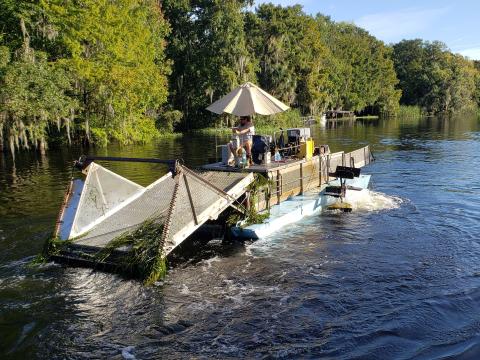To help lower lake levels and prevent flooding, the District recently partnered with the Florida Fish and Wildlife Conservation Commission, the University of Florida Center for Aquatic and Invasive Plants and the Panavista Fish Camp to treat and remove hydrilla from the Lake Panasoffkee Outlet River in Sumter County.

Water naturally flows out of Lake Panasoffkee to the Withlacoochee River through the Outlet River. Hydrilla, an invasive species, recently grew so dense in the Outlet River that it was impeding water flow from the lake. The current high water, which has only been exceeded twice since 1960, sparked the need to remove hydrilla from portions of the Outlet River as quickly as possible.
“We were concerned the water wasn’t flowing properly,” said the District’s Vegetation Management Manager Brian Nelson. “We determined treating the hydrilla was the best option to help lower water levels on Lake Panasoffkee to prevent flooding and protect native plant populations.”
On August 20, a herbicide chemical treatment was performed. There was concern this could result in a vegetation jam near the County Road 470 bridge, which would impede the flow of water. Thus, the decision was made to harvest the hydrilla on the portion of the river upstream of the bridge.
Within a few days, flow in the Outlet River dramatically increased, and water levels in Lake Panasoffkee were lower.
“Flows more than doubled in less than five days, which is huge,” said Senior Professional Engineer Mark Fulkerson. “The increase in flow will help reduce flooding for residents on Lake Panasoffkee and allow future rainfall to drain more naturally.”
